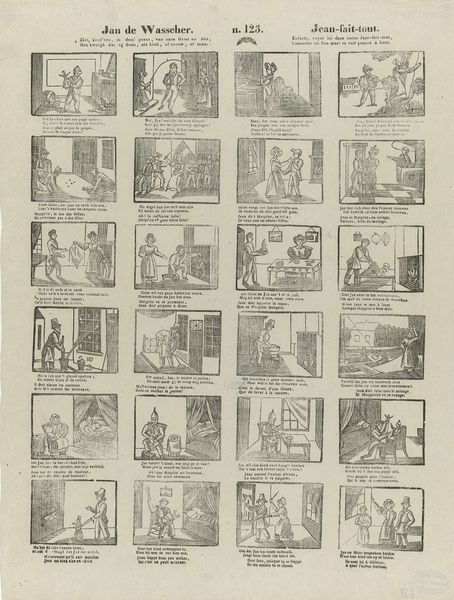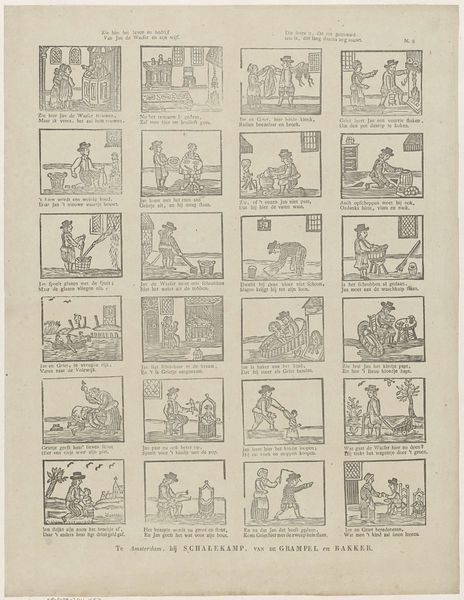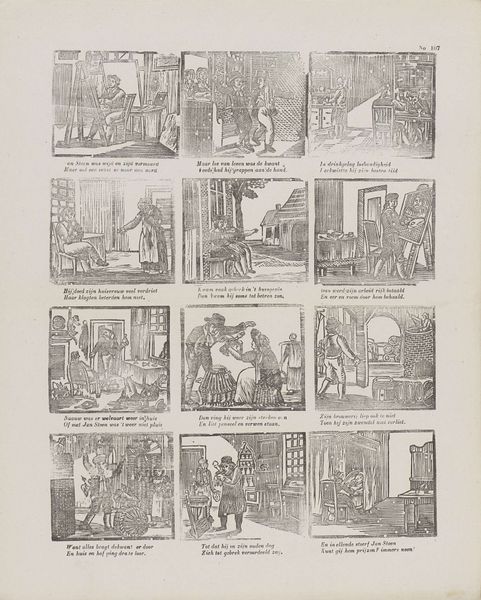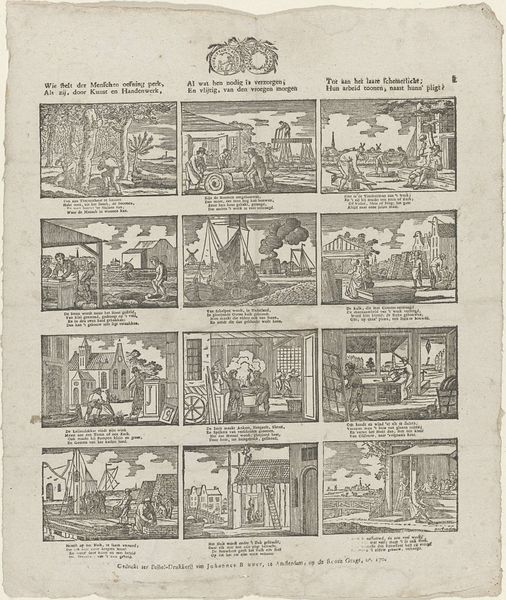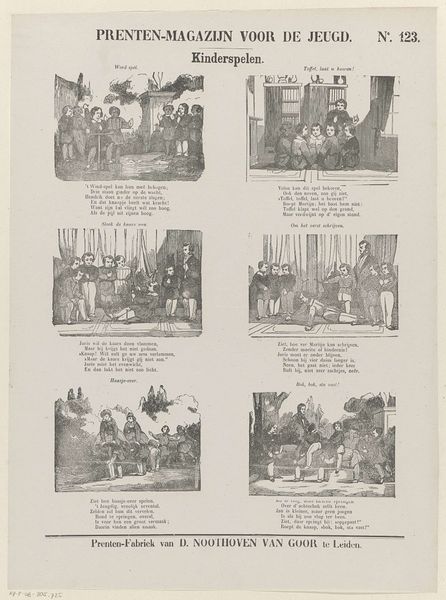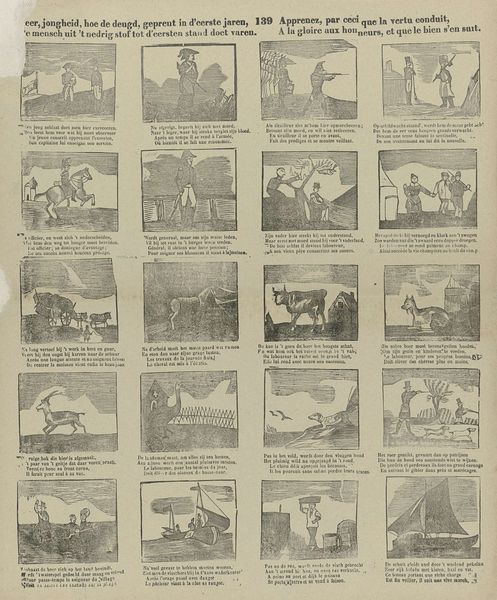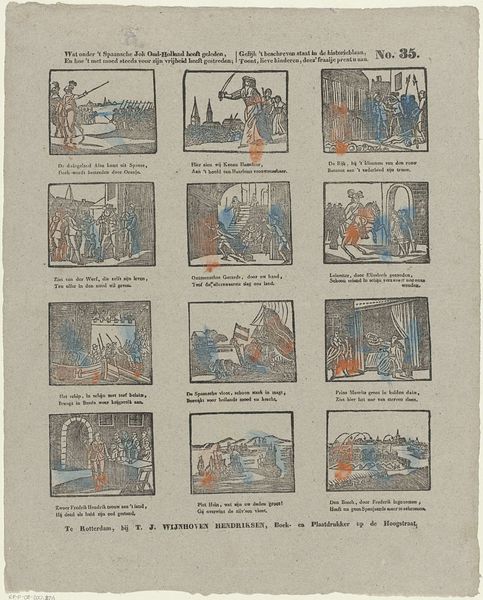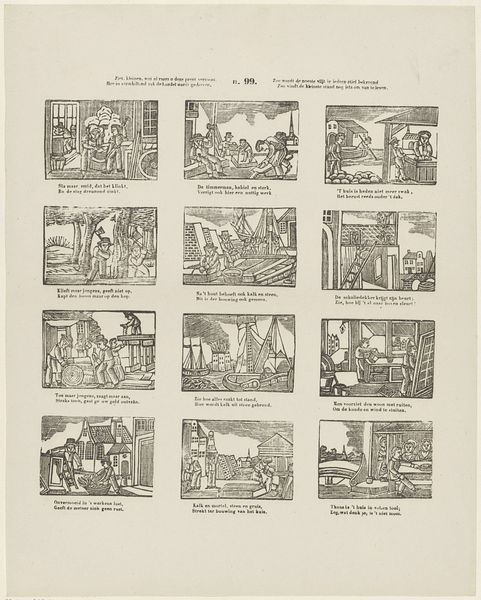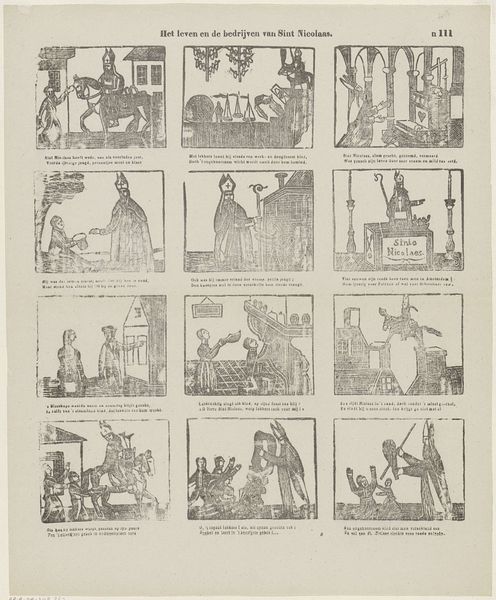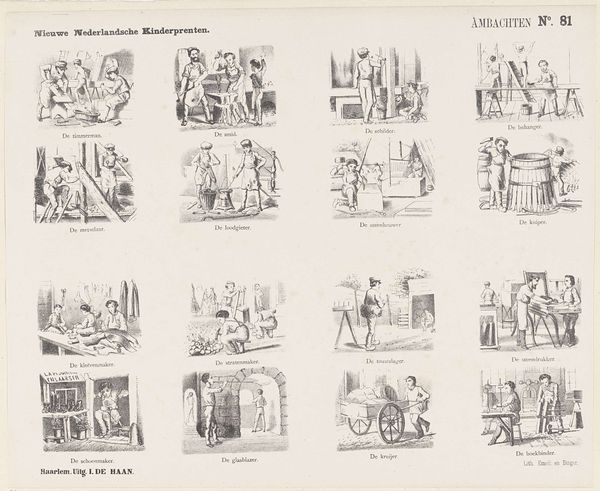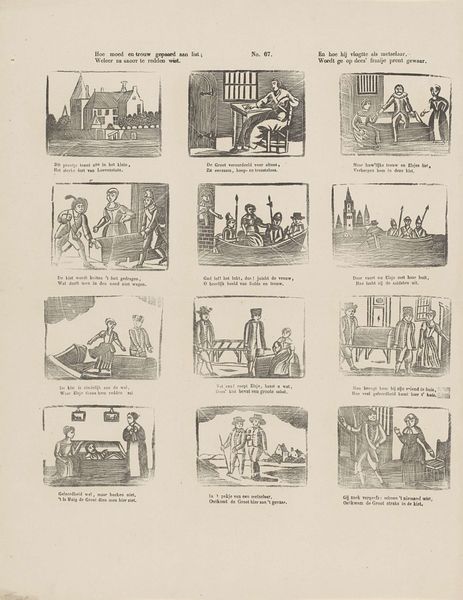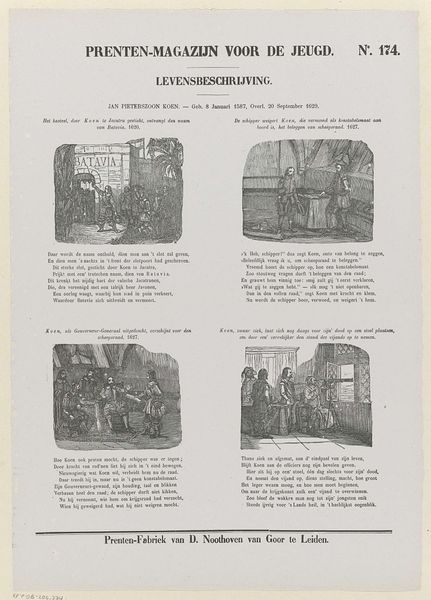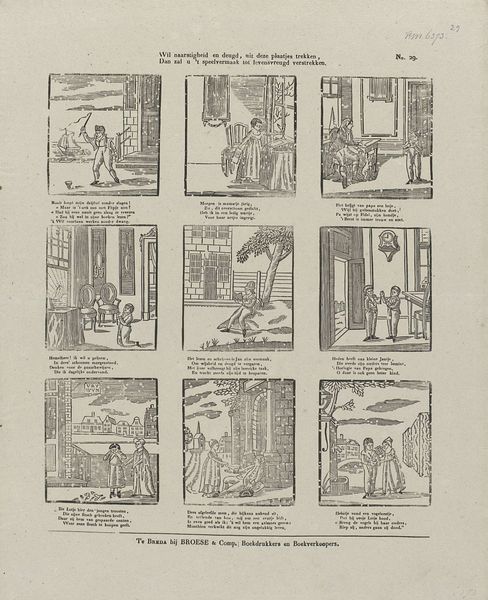
print, woodcut
#
comic strip sketch
#
narrative-art
# print
#
pencil sketch
#
hand drawn type
#
personal sketchbook
#
idea generation sketch
#
sketchwork
#
folk-art
#
pen-ink sketch
#
woodcut
#
sketchbook drawing
#
genre-painting
#
sketchbook art
#
initial sketch
Dimensions: height 391 mm, width 310 mm
Copyright: Rijks Museum: Open Domain
Curator: Here at the Rijksmuseum, we're looking at "Ambachten en bezigheden" by Lutkie & Cranenburg, a print dating between 1848 and 1881. What are your initial thoughts? Editor: My first impression is storybook – a series of vignettes, each capturing a different moment. There’s a folk-art quality to it, very charming, and perhaps a little melancholy in its depiction of daily life. Curator: It's interesting you say that. This piece is a series of small woodcut prints, almost like a comic strip, illustrating various trades and occupations. Think of it as a snapshot of 19th-century Dutch society and how people passed the time. Editor: I see! The arrangement reminds me of a medieval Book of Hours. Each scene functions almost like a symbol, representing a particular aspect of labor. The shipbuilding, the carpentry – each activity would have carried strong symbolic weight. Didactic, even. Curator: Absolutely, and it reflects a broader interest in documenting everyday life that was emerging in art during that period. Also consider the role of narrative in folk art. Each print tells a tiny story and encapsulates a full community sentiment. Editor: I’m particularly drawn to the lettering accompanying each little tableau. It roots the image to the spoken word and vice versa. So much is communicated economically – hard labor and friendship alike, perhaps the balance or contrast therebetween! Curator: Yes, that integration of text and image speaks to its function. It bridges the gap between high art and popular culture, bringing everyday activities to a wider audience through accessible imagery. Editor: Makes you consider who it was made for, this sketchwork? Also how many of these historical professions carry forward to today – bakers and barbers, some obvious continuations! It strikes at something core to the culture – continuity. Curator: Thinking about it, even now, it offers us a valuable connection to the past, helping us reflect on our relationship to work and community in the present. Editor: Precisely, and for me, the charm of its directness lingers. A little peek into a world of working hands.
Comments
No comments
Be the first to comment and join the conversation on the ultimate creative platform.
